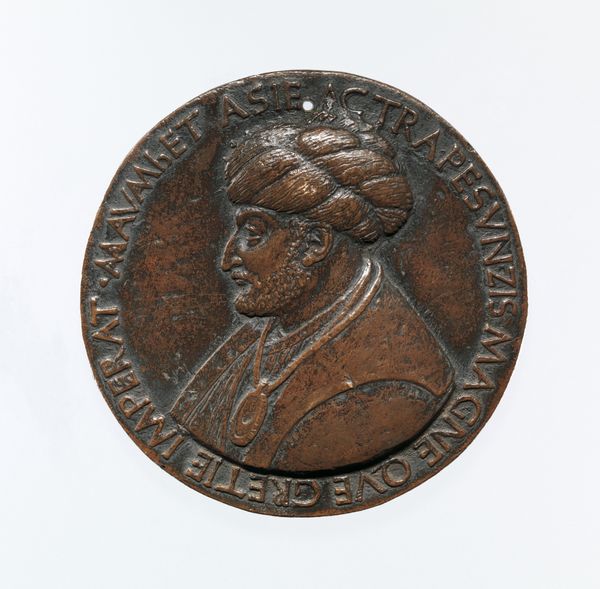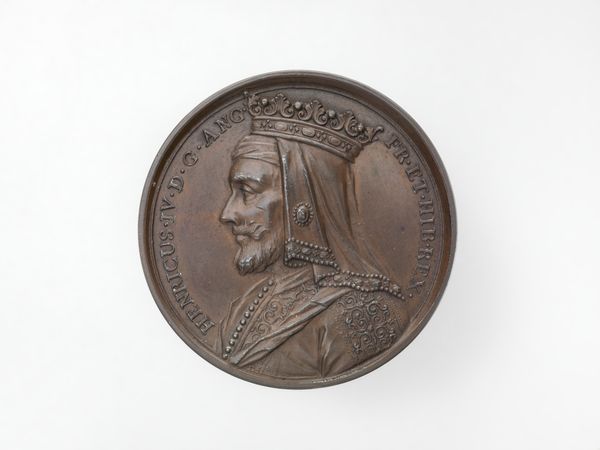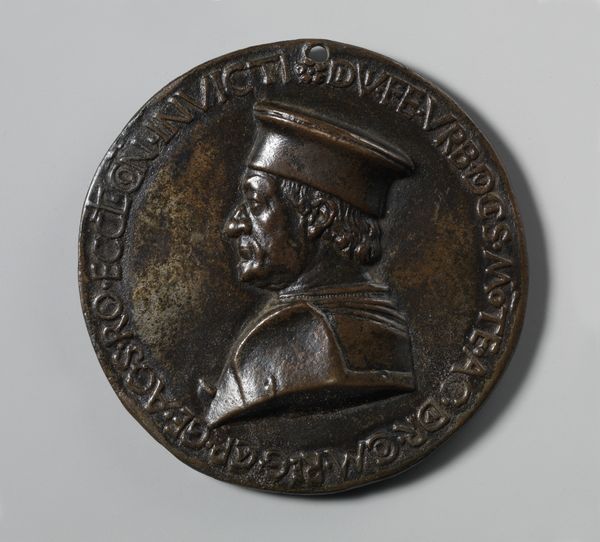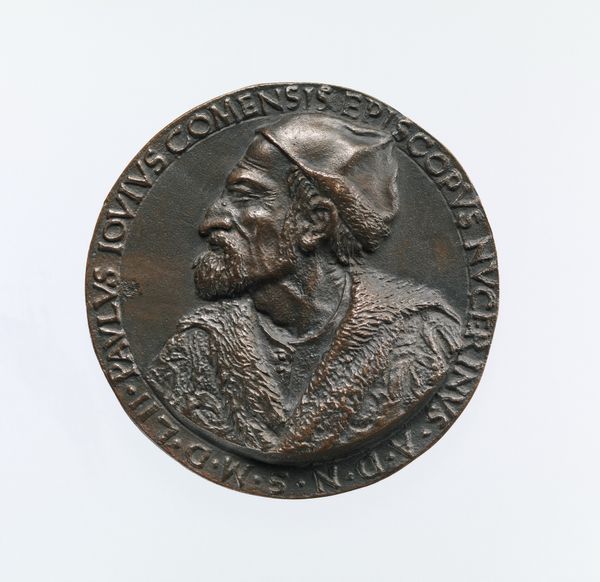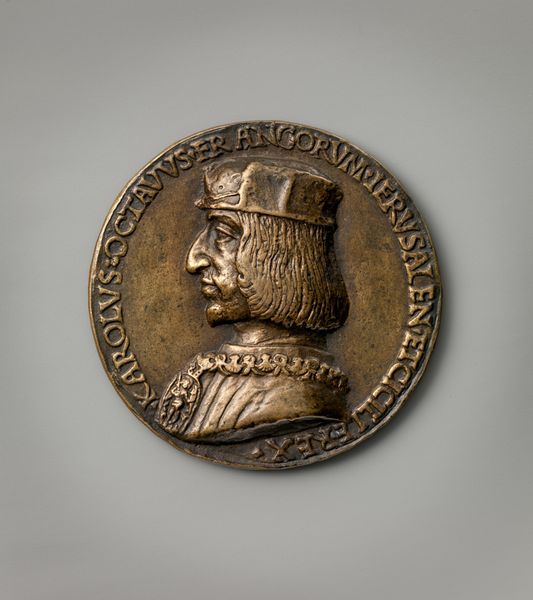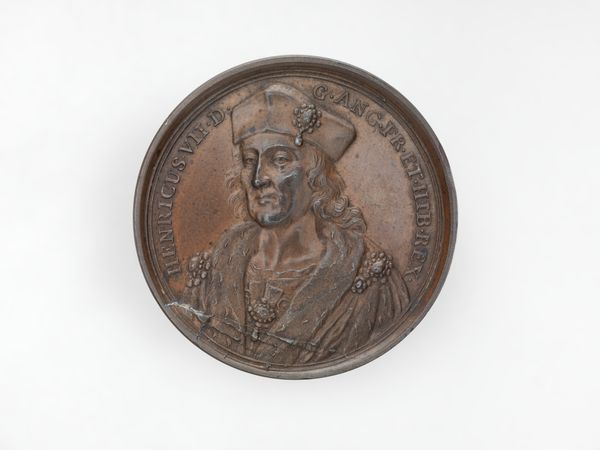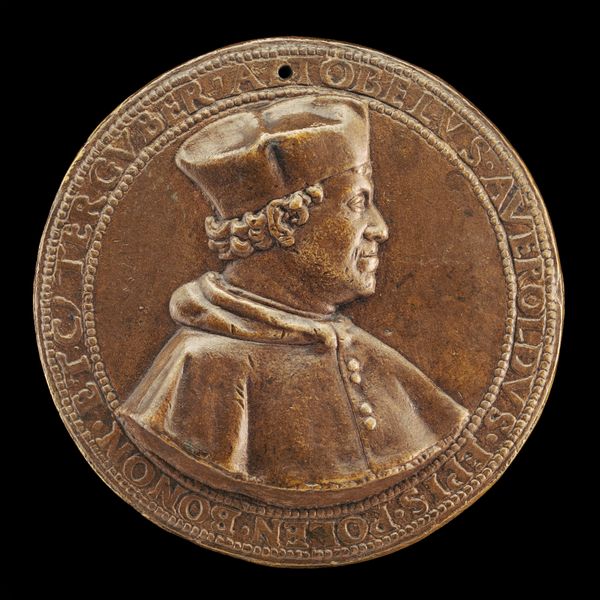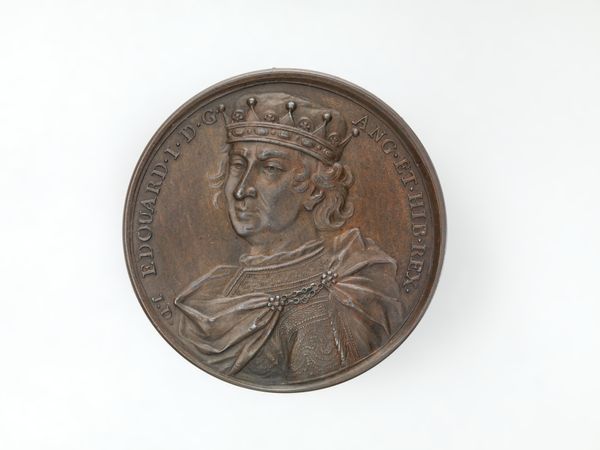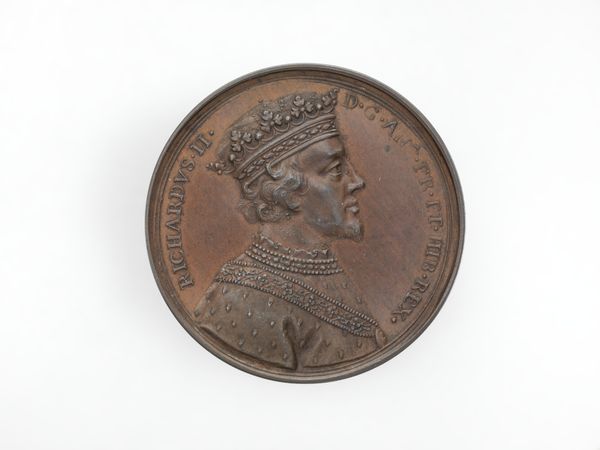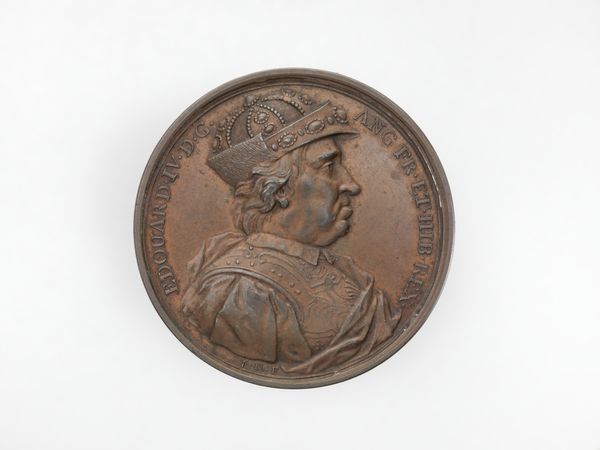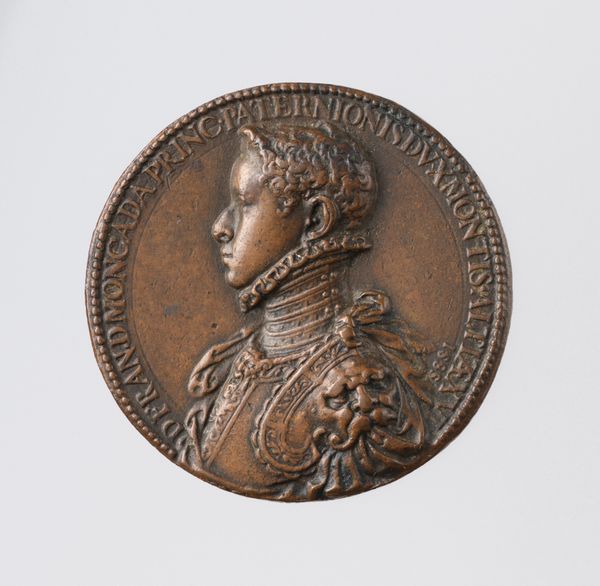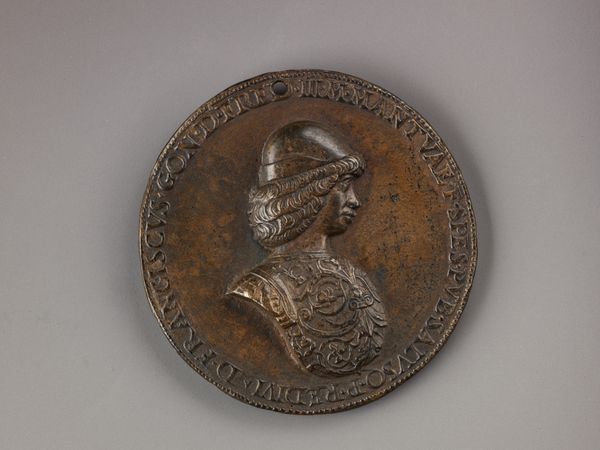
Henry VIII, from the English Monarchs series 1731 - 1732
0:00
0:00
carving, bronze, sculpture
#
portrait
#
medal
#
carving
#
baroque
#
sculpture
#
bronze
#
sculpture
#
carved
#
ceramic
#
decorative-art
Dimensions: Diameter (confirmed): 4.1 cm (41 mm)
Copyright: Public Domain
Curator: Here we have Jean Dassier's bronze medal, "Henry VIII, from the English Monarchs series," dating from around 1731-1732. What strikes you most about it? Editor: Immediately, the craftsmanship. It's intricate! Look at the texture in his beard and the details of the clothing. You can practically feel the weight and density of the metal. It looks very regal. Curator: Absolutely. Dassier produced these portrait medals serially, and their function really points to the popularization of history. These weren’t commissioned by the court; instead, these historical likenesses circulated amongst a broader public eager to possess a token of England’s monarchical past. It suggests an emerging sense of national identity and a desire to engage with history in a tangible way. Editor: That's fascinating. Thinking about it, the choice of bronze is so interesting too. Not as precious as gold or silver, but it still conveys a sense of permanence and authority, linking it to notions of legacy and lasting power. The use of bronze and repetitive nature of this sort of design democratizes image and creates it as an object of production for commerce. How are these distributed? Who is Dassier, and what is his significance at the time? Curator: Jean Dassier was a Swiss medalist active in London. This series of English monarchs suggests his savvy in capitalizing on a market for historical mementos. The medals were likely sold individually or as a set, perhaps at print shops or even apothecaries. Consider the social impact; it allows a wider audience to collect a royal portrait, blurring the lines between the elite and the common person. Editor: So it becomes a signifier, a marker of taste and belonging to a certain class—even if access to the actual elite was impossible. Looking at Henry VIII’s expression… he doesn't seem all that intimidating here. He seems a tad… human? How might this representation of the King humanize or demystify the monarchy? Curator: That's key. In comparison to official painted portraits that reinforced royal power, this smaller, more intimate image allowed for a more personal and potentially critical engagement. You're holding history, in a way, forming a different connection than standing before a monumental painting in a palace. Editor: Indeed, it’s remarkable how a single object can embody so much. This medal gives us insights into 18th-century attitudes toward royalty, manufacturing techniques, and burgeoning consumer culture. Curator: A potent little package of social and material history, wouldn’t you agree?
Comments
No comments
Be the first to comment and join the conversation on the ultimate creative platform.
